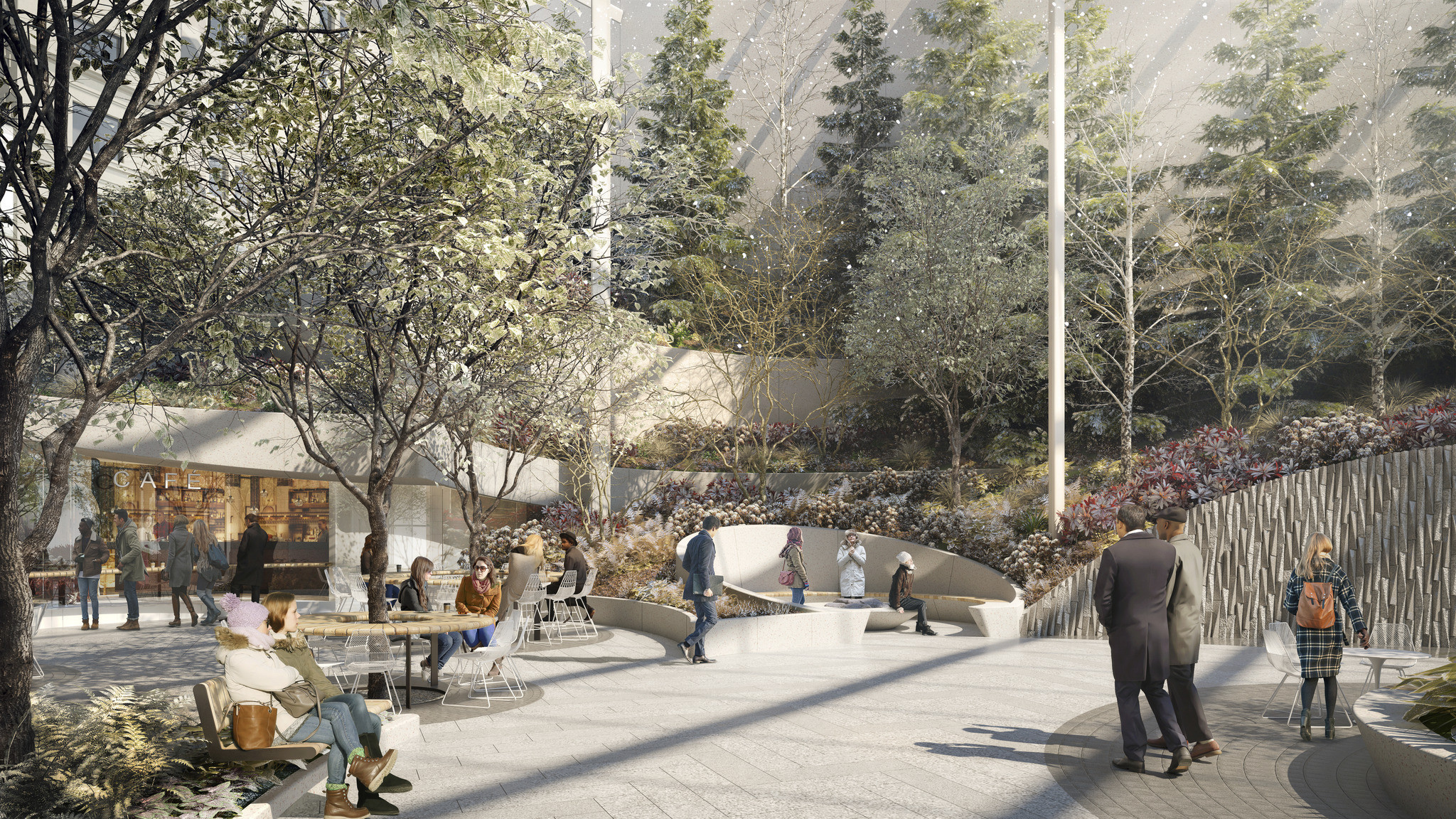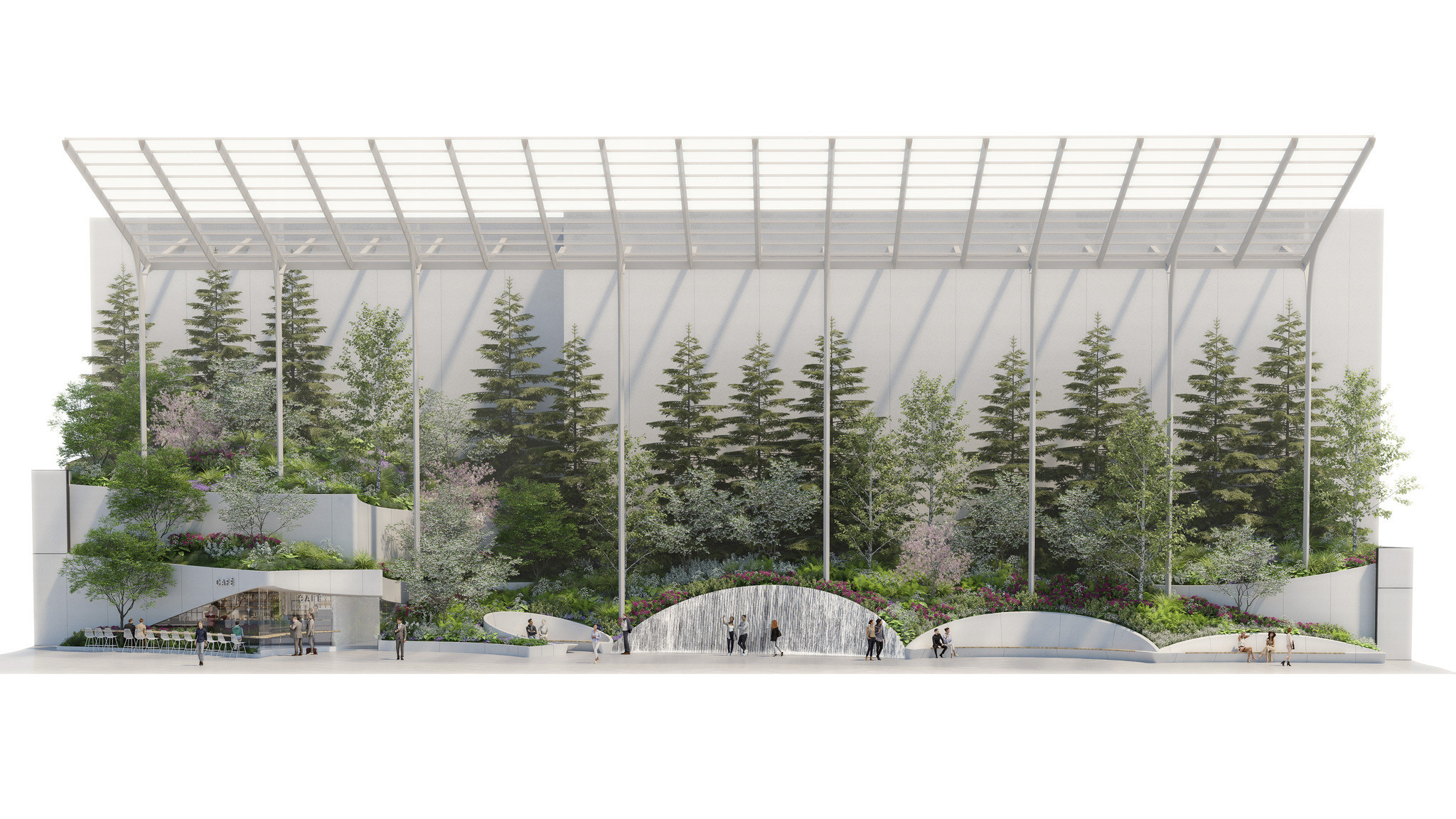Snohetta plans on revamping 550 Madison Avenue, designed by architect Philip Johnson in 1980. The tower, previously known as the AT&T building, is considered an icon of Postmodernism.
550 Madison Avenue:
Focusing on how to increase the building’s involvement with its surroundings, Snohetta proposes to replace the building’s original stone façade with a curvaceous glass curtain wall. This shall be applied to the base of the building in order to make it more welcoming and eye-pleasing to the passers-by. Furthermore, the current public walkway, which is located at the center of the block, will be converted to a vast open-air landscape.

Courtesy of Snøhetta
Read more:
- Barcode B.10.1 | Snohetta
- I Light Marina Bay 2016 – Lampshade | Snohetta
- King Abdulaziz Centre for World Culture | Snøhetta

Courtesy of Snøhetta
The recently-revealed renderings of 550 Madison Avenue show the distinct entrance arch, at the ground floor level, to be partially hidden behind the new fritted glass curtain wall façade. The stone on the pillars surrounding the building will be deposed, producing a new baseline that will make the tower seem to be floating.
“From the street, the reconceived façade dramatically highlights the multi-story arched entry while revealing the craftsmanship of the building’s existing steel structure,” Snøhetta commented during a press release. “Scalloped glass references the sculpted forms of fluted stone columns, re-interpreting the building’s monumentality while creating a lively and identifiable public face for passersby. With this increased transparency, the activity within the lobby, atrium, and first 2 levels of the building will become part of the vibrant energy of the street.”

Courtesy of Snøhetta
The 550 Madison Avenue tower, which was built in 1984, was designed by architects Philip Johnson and John Burgee in response to the tremendous amount of glassy towers that were invading the city back then. The developers, Olayan Group and Chestfield will pay around $300 million for the tower’s transformation which is expected to be completed in 2019.
“The re-imagined 550 Madison Avenue reflects how we work and live in New York today,” Snøhetta declared. “The design sensitively transforms a sculpturally monumental building and celebrates the experience of the building where it meets the street. By updating this inward-looking tower for the 21st century, the redesign will foster a more vibrant, dynamic relationship between the building, the city, and the people who inhabit it.”





